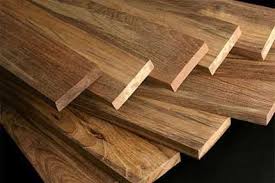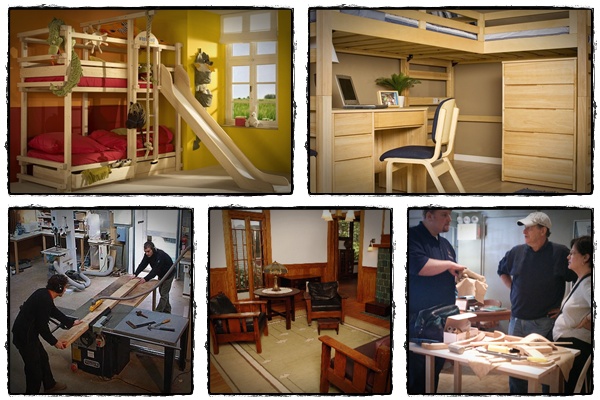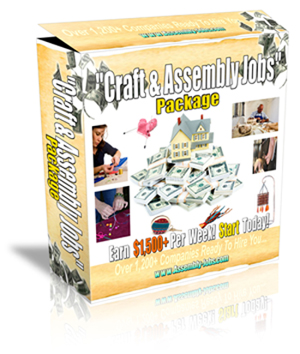Your choice of wooden picture frame moulding is important when it
comes to making a successful picture frame.Timber that is used to make
picture frames over the centuries has included a range of hardwood and
softwood. Hardwood has a straw-like structure that gives it a porous
appearance when cut across the grain. Hardwood does not refer to the
strength of the timber but to this grainy appearance. Balsa wood is a
hardwood although soft to work with for example. Softwoods are produced
by coniferous trees and the term does not necessarily mean the timber is
soft.

The picture frame manufacturers and frame makers prefer
hardwoods because of their close tight grain, their stability in regards
to resistance to twisting or warping and their easy staining
properties. Twist or wind is where the wood twists along its length.
Warping is when the timber bends across its grain. In cases of warping
there can be solutions like cutting notches across the grain to release
the tension in the fibers and straighten the timber. Wind is usually a
defect that is impossible to remove and so it is advisable to avoid
twisted wood wherever possible when selecting timber for picture frames.
Much of the warping and twisting is caused due to poor handling or
selection of poor timber in the first place. The structure of the grain
is formed by the individual tree cells throughout the life of the tree.
When cutting of the timber into planks careful consideration should be given as to the method and direction of sawing the wood. Wood that is being cut can either be cut by cutting on the quarter or by tangentially cutting the wood. These two systems for cutting wood are referred to as quarter-cutting or back-cutting.
When timber is quarter-sawn the medullary ray fleck or figuring is revealed at its fullest. This is sort after by cabinet makers who wish to make a decorative piece of furniture. Back-sawing timber is more appropriate for constructive purposes where structural stability along the length of the beam is important. Cutting timber to get the best result is a skill acquired over many years in the industry and through a deep understanding of the uses for each plank cut.
The commonly used hardwood timbers for picture framing include:
- Ramin
- Obeche
- Meranti
- Jeluton
There are a number of exotic hardwoods used for framing and they include:
- Cherry
- Oak
- Ash
- Walnut
- Cedar
- Olive
- Elm
Applying exotic timbers to frames by veneering them onto a more economical substrate is very common. Veneered frames come in and out of fashion and the degree of finish applied to the veneer varies from season to season. Trends in picture framing are always moving to follow contemporary tastes in furniture.
In Australia during the early part of 2012, I have noticed a trend in timber frames harking back to the traditions of Danish furniture with its simple sleek lines. Some of the veneers have an unfinished raw timber look. When you couple this look with Australian hardwood like Victorian Ash, being requested in "raw timber" finishes, there is a clear trend emerging in an expensive minimalist exotic timber look. Not a highly polished look like French polished furniture or lacquered timbers but one allowing the natural appearance and rawness of the timber to shine through. I would expect each region to have a local trend so the barn-wood look of weathered rubbed back timber may be popular in the American market but in Europe it may be olive wood or English Oak or Baltic Pine and in Australia it will be the natural looks of Victorian Ash (Tassie Oak) or Jarrah. These natural timbers can ooze opulence when framing Aboriginal artwork or contemporary art.
Many hardwoods are now in short supply due the over consumption of the slow-growing timbers.
Hardwood trees generally are anywhere from 80 - 150 years old and upwards when they are harvested whereas plantation softwood can be harvested in around 20 years. The hardwood has been replaced by softwoods that in many cases are finger-jointed. Finger-jointed timber is made by splicing small pieces of timber together with a zig-zag style joint. The joints occur at quite random intervals and the timber is not suitable for staining. The jointing is visible and when used for picture frames they are covered with paint, composition, foils or leafed to cover them up. There are several natural timber foils that are applied over the softwood base to give a hardwood appearance. One advantage of finger-jointed frames is that if one section of the frame has warped or twisted it can easily be cut out and often the rest of the length is still usable.
Whichever timber you choose to make a picture frame with be sure to check it for Wind (twist) and Warp (bending) before you start cutting it up into pieces. Much of the heartache associated with making picture frames can be avoided by sound selection of good quality frame moulding in the first place.
When cutting of the timber into planks careful consideration should be given as to the method and direction of sawing the wood. Wood that is being cut can either be cut by cutting on the quarter or by tangentially cutting the wood. These two systems for cutting wood are referred to as quarter-cutting or back-cutting.
When timber is quarter-sawn the medullary ray fleck or figuring is revealed at its fullest. This is sort after by cabinet makers who wish to make a decorative piece of furniture. Back-sawing timber is more appropriate for constructive purposes where structural stability along the length of the beam is important. Cutting timber to get the best result is a skill acquired over many years in the industry and through a deep understanding of the uses for each plank cut.
The commonly used hardwood timbers for picture framing include:
- Ramin
- Obeche
- Meranti
- Jeluton
There are a number of exotic hardwoods used for framing and they include:
- Cherry
- Oak
- Ash
- Walnut
- Cedar
- Olive
- Elm
Applying exotic timbers to frames by veneering them onto a more economical substrate is very common. Veneered frames come in and out of fashion and the degree of finish applied to the veneer varies from season to season. Trends in picture framing are always moving to follow contemporary tastes in furniture.
In Australia during the early part of 2012, I have noticed a trend in timber frames harking back to the traditions of Danish furniture with its simple sleek lines. Some of the veneers have an unfinished raw timber look. When you couple this look with Australian hardwood like Victorian Ash, being requested in "raw timber" finishes, there is a clear trend emerging in an expensive minimalist exotic timber look. Not a highly polished look like French polished furniture or lacquered timbers but one allowing the natural appearance and rawness of the timber to shine through. I would expect each region to have a local trend so the barn-wood look of weathered rubbed back timber may be popular in the American market but in Europe it may be olive wood or English Oak or Baltic Pine and in Australia it will be the natural looks of Victorian Ash (Tassie Oak) or Jarrah. These natural timbers can ooze opulence when framing Aboriginal artwork or contemporary art.
Many hardwoods are now in short supply due the over consumption of the slow-growing timbers.
Hardwood trees generally are anywhere from 80 - 150 years old and upwards when they are harvested whereas plantation softwood can be harvested in around 20 years. The hardwood has been replaced by softwoods that in many cases are finger-jointed. Finger-jointed timber is made by splicing small pieces of timber together with a zig-zag style joint. The joints occur at quite random intervals and the timber is not suitable for staining. The jointing is visible and when used for picture frames they are covered with paint, composition, foils or leafed to cover them up. There are several natural timber foils that are applied over the softwood base to give a hardwood appearance. One advantage of finger-jointed frames is that if one section of the frame has warped or twisted it can easily be cut out and often the rest of the length is still usable.
Whichever timber you choose to make a picture frame with be sure to check it for Wind (twist) and Warp (bending) before you start cutting it up into pieces. Much of the heartache associated with making picture frames can be avoided by sound selection of good quality frame moulding in the first place.
David Schummy, owner of Fix-a-Frame, is a qualified picture framer from Brisbane, Australia.
David authored 16 of the 22 modules the Australian Government uses to train picture framers. He has taught picture framing to professionals and hobby framers since 1991.
His latest DVD "Seven Secrets to Making Picture Frames" is available from http://www.fixaframe.com.au
Visit http://www.endurart.com for your Free E-Book "The 10 Questions To Ask All Picture Framers"
Article Source:
http://EzineArticles.com/?expert=David_A_Schummy
David authored 16 of the 22 modules the Australian Government uses to train picture framers. He has taught picture framing to professionals and hobby framers since 1991.
His latest DVD "Seven Secrets to Making Picture Frames" is available from http://www.fixaframe.com.au
Visit http://www.endurart.com for your Free E-Book "The 10 Questions To Ask All Picture Framers"




0 comments:
Post a Comment